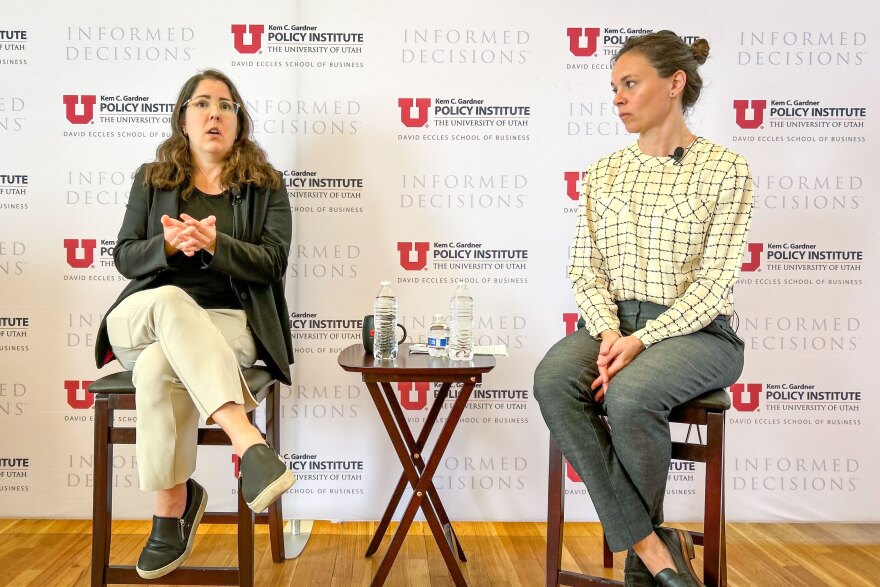By median age, Utah is the youngest state in the United States. Even so, new data from the 2020 census finds that the state’s older population is growing. While at the same time, the number of young children is falling.
Over the last decade, the number of Utahns age 65 and up grew by 132,335. At that same time, the count of kids under age five fell by 24,144, a net swing in favor of the older population.
Overall, Utah added over half a million residents from 2010 to 2020.
Experts say with an average age of only 31, Utah’s declining birth rate can be explained in large part by economic factors driven by that fast-growing population.
“It's really challenging to find affordable housing,” Population Reference Bureau Program Director Beth Jarosz told attendees at a Kem C. Gardner Policy Institute Newsmaker Breakfast on June 27. “We know based on survey data that families are taking that into consideration when they're figuring out how many kids to have.”
Housing costs, both in the Utah buying and renting markets, have increased in the last decade. Those increases were only accelerated by the COVID-19 pandemic.
“I suspect that housing feels a lot less affordable to all of you than it did 10 years ago,” Jorsosz said, addressing the breakfast attendees.
Another factor driving down the birth rate, said Jarosz, is the cost of child care.
“It's sort of an economic structure that requires two fairly high incomes to be able to afford basic necessities, to be able to afford housing, transportation, health care and food,” she said. “You need to have two people working and child care is neither available nor affordable, and you end up with declining birth rates.”
According to the data, there were even parts of the state that saw no growth due to babies being born.
“All of the growth in Salt Lake City came from the adult population,” said Mallory Bateman, who serves as the policy institute’s director of demographic research. “The under-18 population declined and we didn't have a lot of experiences like that throughout the state.”
Utah isn’t the only state with fewer babies being born than 10 years ago. Nationally, children under the age of five also shrank by 9%. Part of the decline in birth rates can be explained by a decrease in teen pregnancies seen over the last 30 years, Jarosz said.
“I have been able to say that teen birth rates have hit a record low every year for my entire career,” she said. “It's a great thing.”
According to population estimates from the U.S. Census Bureau, white populations are experiencing declining birth rates more than minorities — a trend not seen as much in Utah.
“We didn't see a total decline in the non-Hispanic white, which is what we would typically use for the majority population,” Bateman said. “But we did see increases in all of the ethnic groups outside of non-Hispanic white in Utah.”
When it comes to what can be done to increase the birth rate, some of that can be accomplished on the policy front. To Jarosz, if parents get to their 30s and 40s and feel they can’t have two or more kids that’s a signal for policymakers to consider.
“Making child care more affordable and accessible would go a long way toward increasing birth rates,” Jarosz said. “Paid family leave would [also] go a long way toward helping families have the number of kids that they want.”






